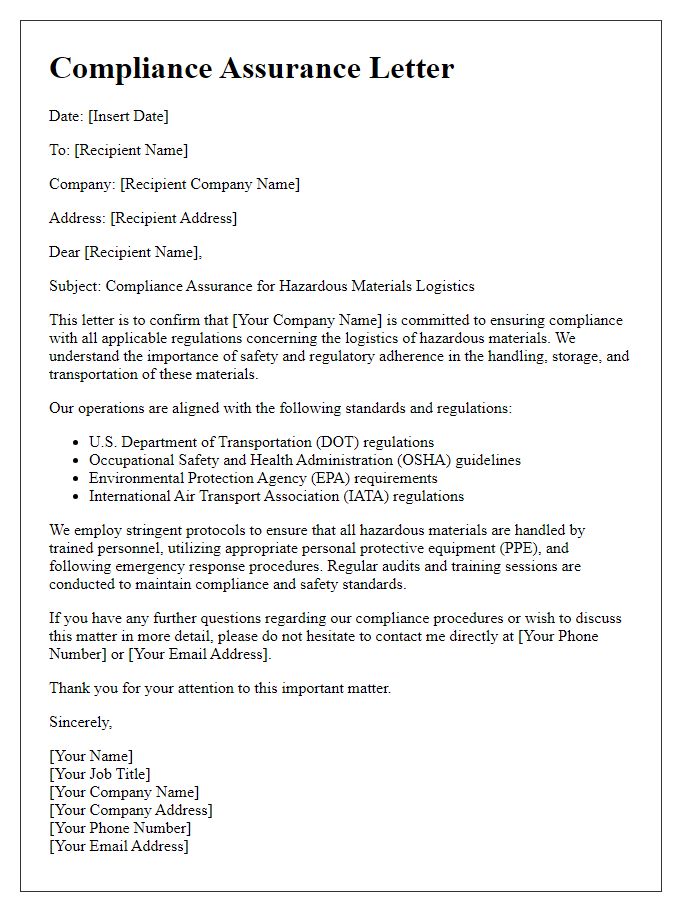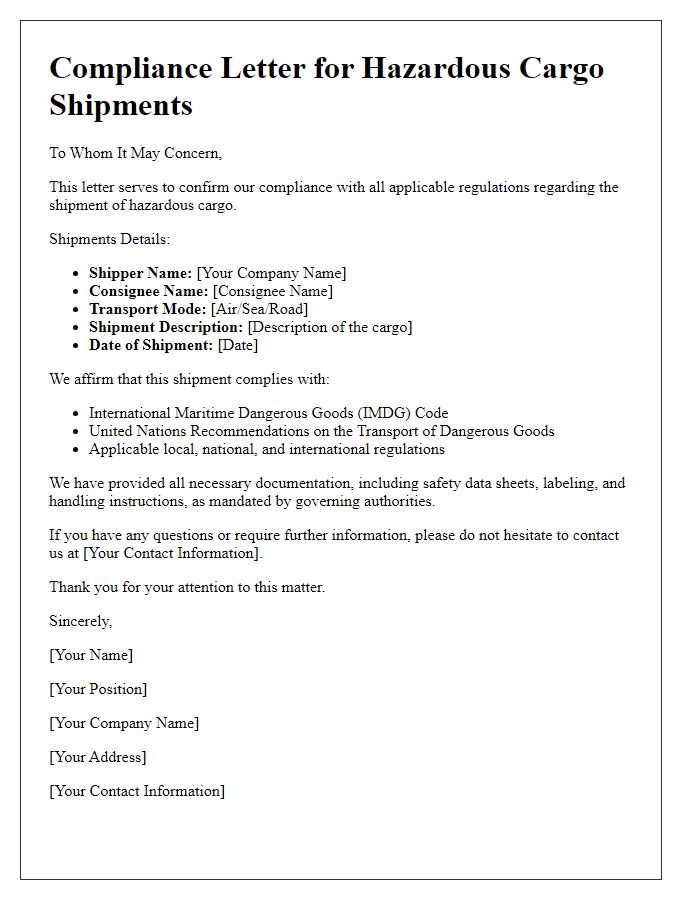When it comes to shipping dangerous goods, ensuring compliance is crucial for the safety of everyone involved. Understanding the regulations can seem daunting, but with the right guidance, you can navigate the complexities with ease. This article will break down the essential elements of shipping dangerous goods, making it clearer for you to implement best practices. So, let's dive in and ensure your shipments are safe and compliant!

Accurate Classification and Description
Accurate classification and description of dangerous goods are essential for compliance with regulations set by organizations such as the United Nations (UN) and the International Air Transport Association (IATA). Each dangerous good must be correctly classified according to its specific hazard category--flammable, toxic, corrosive, or radioactive. For instance, lithium batteries must be identified as UN3480 or UN3481, depending on whether they are contained in or packed with equipment. The Material Safety Data Sheet (MSDS) should accompany these shipments, detailing physical and chemical properties, safe handling procedures, and emergency measures in case of an incident. Proper labeling with compliant hazard symbols, regular inspections of packaging integrity, and adherence to weight restrictions play crucial roles in ensuring safety. Non-compliance can lead to penalties, damage to reputation, or catastrophic incidents during transit.
Proper Packaging and Labeling
Proper packaging and labeling are critical elements for the safe transportation of dangerous goods, including hazardous materials and chemicals, in compliance with regulations set forth by organizations such as the United Nations (UN) and the Department of Transportation (DOT). Packaging must adhere to the specifications outlined in the UN Model Regulations, emphasizing the use of UN-approved containers that can withstand pressures and potential leaks. For instance, when shipping flammable liquids (categorized under UN Class 3), containers should be hermetically sealed and made from materials resistant to such substances. Labeling must display clear hazard symbols, such as the flame for flammable items, and include the appropriate UN number in a visible location. Certifications on packaging must confirm compliance with relevant regulations, significantly impacting safety during transit in various modes, including air or sea freight. In North America, adherence to the Hazardous Materials Regulations (HMR) ensures additional protection against risks associated with improper handling while enforcing strict penalties for non-compliance. Proper training for personnel involved in packaging and shipping is essential to minimize incidents.
Compliance with Regulatory Requirements
Ensuring compliance with regulatory requirements for dangerous goods shipping involves adhering to guidelines established by organizations such as the International Air Transport Association (IATA) and the United Nations (UN) Model Regulations. Specific classifications, such as flammable liquids, explosives, or corrosive substances, must be accurately labeled according to the Hazardous Materials Identification System, which employs numbers ranging from 1 to 9. Each category necessitates distinct packaging standards, including UN-approved containers, that withstand transport stresses. Documentation, including the Dangerous Goods Declaration Form and Material Safety Data Sheets (MSDS), must accompany shipments. Specific training certifications for personnel handling hazardous materials, mandated by Occupational Safety and Health Administration (OSHA) standards, is crucial to maintain safety during transit. Regular audits and risk assessments help ensure ongoing adherence to local, national, and international regulations in places like the United States or Europe, ultimately mitigating potential legal liabilities and environmental impact.
Documentation and Shipment Records
Shipping dangerous goods requires meticulous documentation and stringent compliance with regulations set by organizations like the International Air Transport Association (IATA) and the United Nations (UN). Necessary documentation includes the Material Safety Data Sheet (MSDS), which outlines the specific hazards associated with the substances, labeling requirements indicating the UN number, and the corresponding hazard class, such as flammable liquids (Class 3) or toxic substances (Class 6). Shipments must also have a declaration of Dangerous Goods, detailing quantity, packaging type, and emergency response information. Accurate record-keeping is essential, allowing for traceability and accountability in case of incidents or inspections at facilities such as airports, seaports, and material supply chain hubs. Compliance with local regulations, like the Occupational Safety and Health Administration (OSHA) standards in the United States, further emphasizes the importance of comprehensive documentation throughout the shipping process.
Emergency Response Information
In dangerous goods shipping, Emergency Response Information is critical for ensuring safety during transport. This document outlines vital details such as UN numbers, which identify specific hazardous materials, and proper shipping names required by the United Nations for classification. Emergency contact numbers provide immediate access to trained professionals who can assist during incidents, while the Material Safety Data Sheet (MSDS) offers comprehensive information on handling, risks, and first aid measures. Response techniques highlight necessary actions to take in case of spills or exposure, ensuring personnel are equipped with knowledge to mitigate hazards effectively. This information must be readily available and easily accessible during transportation to ensure compliance with regulations set forth by organizations such as the International Air Transport Association (IATA) and the International Maritime Organization (IMO).
Letter Template For Dangerous Goods Shipping Compliance Samples
Letter template of compliance assurance for hazardous materials logistics













Comments